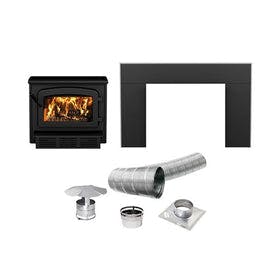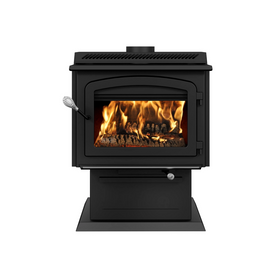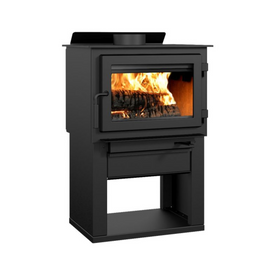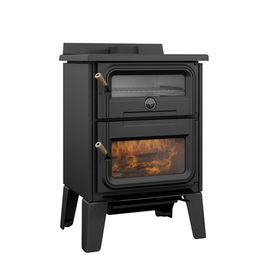
Smoke Detectors: A Comprehensive Guide
Last Updated: Mar 28, 2025Smoke detectors save lives. In a recent report, the National Fire Protection Association revealed that 41 percent of home fire deaths occurred in properties without smoke detectors. Smoke detectors are a necessary safety feature. You should install carbon monoxide detectors in any home with fuel-burning appliances. These include furnaces, water heaters, and ranges or cooktops, leading to dangerous hotspots.
Here's what you need to know about how smoke detectors work and where you should install them.
Table of Contents
- What Is a Smoke Detector?
- What Types of Smoke Detectors Are Available?
- What Are Ionization Smoke Detectors?
- What Are Photoelectric Smoke Detectors?
- What Are Dual-Sensor Smoke Detectors?
- What Are Carbon Monoxide Detectors?
- What Are Combination Smoke and Carbon Monoxide Detectors?
- Wired, Battery Powered and Smart Smoke Detector Options
- What Are Hardwired Smoke Detectors?
- What Are Battery-Powered Smoke Detectors?
- What Are Smart Smoke Detectors?
- What Should I Look For In A Smoke Detector?
- Where and How Should I Install a Smoke Detector?
- How Much Do Smoke Detectors Cost?
- What Are the Best Brands of Smoke Detectors?
- What Are Some of the Best Smoke Detectors?
- How Long Does a Smoke Detector Last?
- Check The Rules In Your Neighborhood

What Is a Smoke Detector?
A smoke detector is a device designed to sense smoke and then sound a loud warning to alert occupants of a building or home. Because of the synthetic materials contained in our furniture and buildings, fires can spread quickly; often, you'll have just a few minutes to get out safely.
What Types of Smoke Detectors Are Available?
Some fires flare up in flames, and others burn slowly or smolder. There are a few types of smoke detectors you can buy, and some are effective for one or both types of fire. You can buy standalone smoke detectors, carbon monoxide detectors, and ones that detect both in one unit.
What Are Ionization Smoke Detectors?
Ionization Smoke Detectors have a small amount of radioactive material between two electrically charged plates. When tiny particles indicating rapid, flaming fires disrupt the current between the plates, it can detect them. They are less effective at detecting smoldering fires. Because the units can be set off by burnt food or steam, it's best not to install them near a bathroom or kitchen.
What Are Photoelectric Smoke Detectors?
Photoelectric Smoke Detectors use an LED light that goes off when smoky particles disrupt the light beam. They are best used to detect smoky, smoldering fires, which are generally more dangerous because they often go unnoticed. They are not as good at detecting sudden, fast-burning fires.
What Are Dual-Sensor Smoke Detectors?
Dual-Sensor Smoke Detectors combines both ionization and photoelectric technology to sense both flaming and smoky fires.
What Are Carbon Monoxide Detectors?
Carbon Monoxide Detectors can detect the presence of this deadly gas but do not sense smoke or other types of explosive gases, including natural gas, propane, or methane.

What Are Combination Smoke and Carbon Monoxide Detectors?
Combination Smoke and Carbon Monoxide Detectors use photoelectric or ionization to detect both CO and smoke.

Wired, Battery Powered and Smart Smoke Detector Options
Most of the above units are available as either hardwired or battery-powered units, and some are also smart detectors.
What Are Hardwired Smoke Detectors?
Hardwired smoke detectors connect directly into your home's electrical system and might need professional installation. Most devices also have a battery inside as a backup in case of a power outage. Because hardwired detectors are easy to interconnect, they can be set to all go off at once if one is triggered. This setup is a valuable safety feature for homes with multiple levels since the devices can alert you to danger before the fire or CO spreads everywhere.
What Are Battery-Powered Smoke Detectors?
Battery-Powered Smoke Detectors are simple to install and aren't affected by power failures. Typically, you'll need to replace the batteries twice a year or purchase a unit with lithium batteries, which can last up to 10 years.
What Should I Look For In A Smoke Detector?
No matter which device you choose, read the packaging to be sure it meets the Underwriter Laboratories (UL) certification standards. And check the back of the packaging for the manufacture date because smoke detectors lose sensitivity over time.

Where and How Should I Install a Smoke Detector?
The NFPA suggests installing smoke detectors with photoelectric and ionization sensors because they sense both flaming and smoldering fires. Put the units inside and outside each bedroom, plus at least one device per floor, including the basement and attic.
It's essential to install both smoke and carbon monoxide detectors correctly. Because smoke rises, experts advise putting them on the ceiling, not the wall. Install a device at least 10 feet from your stove to minimize false alarms set off by cooking in the kitchen.
What Are the Best Brands of Smoke Detectors?
First Alert, Google, Kidde all have a variety of hardwired, battery-powered, and smart smoke detector options.

What Are Some of the Best Smoke Detectors?
- Hardwired Option: The First Alert, BRK Hardwired Ionization Smoke Alarm, is affordable and reliable. It comes with a 10-year battery backup, so it will continue working even if there's a power failure. It also uses smart technology to reduce the number of false alarms from cooking or steam. The device will send out a signal when it's time to get a new unit.
- Combination smoke and carbon monoxide: Google's Nest Protect Wired Smoke and Carbon Monoxide Detector is a combination unit available in battery-powered and hardwired models. This device can detect both fast and slow-burning fires, and it connects to your smartphone through Wi-Fi to receive updates in real-time. It tests itself automatically, so you don't have to. It features an integrated night light activated if you walk under it. However, you'll pay for all of its features, as it's one of the priciest models on the market.
- Battery-operated model: the Kidde Combination Smoke and Carbon Monoxide Smoke Alarm is easy to install and uses three AA batteries. The device, which uses ionization technology, features a voice alarm if fire or CO is detected. It will alert you when the batteries are getting low. The battery compartment will stay open if the batteries have not been inserted correctly, so you'll know your smoke detector is working.
- Affordable Option: the First Alert Dual Sensor Smoke Detector can protect your home from both smoldering and flash fires. This device uses both photosensitive and ionization sensors. It has a built-in lithium battery that will last for ten years. Having both sensors means a higher possibility of false alarms.
- Interconnected Option: For homes with multiple levels, you'll need many smoke detectors. The Kidde FireX Hardwire Smoke and Carbon Monoxide Combination Detector offers more value by selling two-packs and three-packs. You will need to hire a professional to hardwire these units, which feature photoelectric sensors. A 9V backup battery is included in case of a power outage. Because the devices are interconnected, they will all go off in an emergency. There is a voice alert telling you whether it detects a fire or carbon monoxide.

How Long Does a Smoke Detector Last?
Depending on the model, most smoke detectors will need replacing every five to ten years. Units that detect both smoke and CO may require replacement more often. The manufacturer's instructions will let you know how often to change the batteries and the units themselves.

Check The Rules In Your Neighborhood
Some municipalities have regulations about what types of smoke or CO detectors are recommended, so be sure to ask. And check with your insurance company, too, since many offer discounts to homes with smoke detectors.
You also might be able to pair your smoke or CO detectors into your security system. This step will enable you to hear the alarm both inside and outside your home. These systems often feature a monitoring service that will call the police or fire department or your cell phone.
Having working smoke detectors is one of the most important ways you can keep your home and family safe, so don't put off installing them!
Wendy Helfenbaum
Wendy Helfenbaum is a Montreal-based journalist and TV producer whose work has appeared in many outlets including Apartment Therapy, Metropolis, Architectural Digest’s AD Pro, AARP, Costco Connection, Country Gardens, Realtor.com, Style at Home, Canadian Living and many more. Follow her @WendyHelfenbaum












